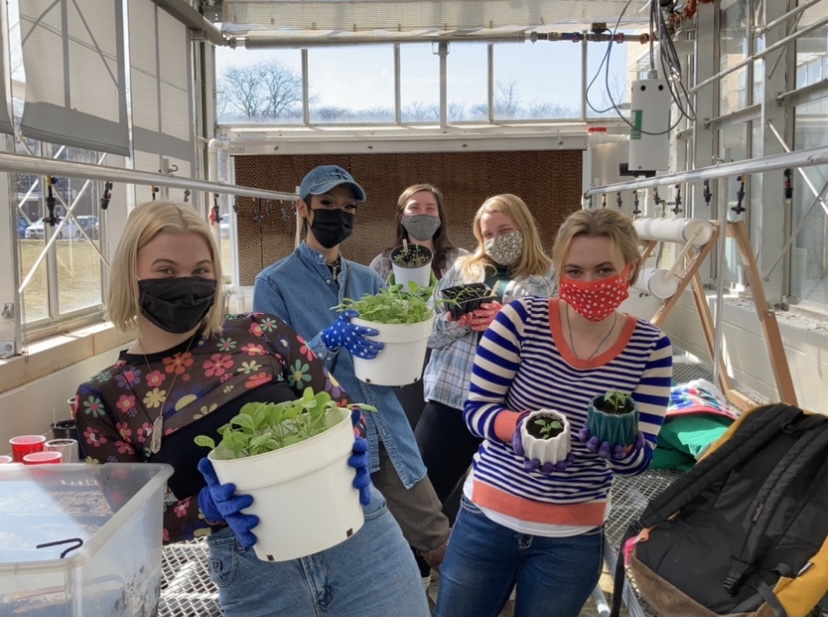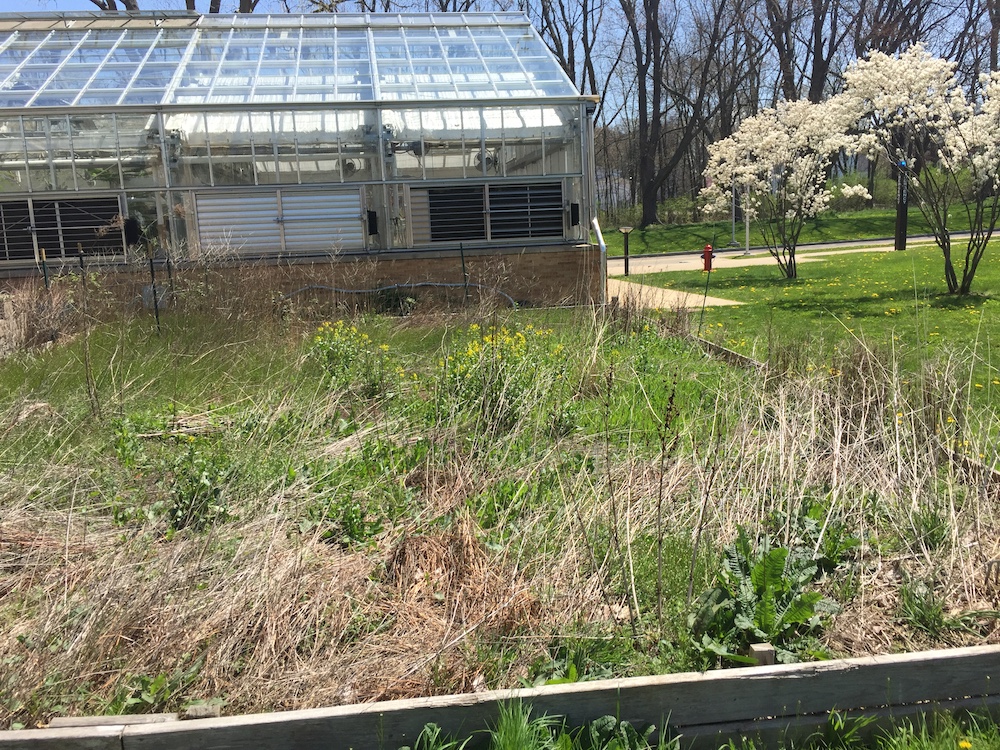JULES HOEPTING
Design Editor
*The writer of this article is a participant in the course mentioned.
Sprouting up this spring semester is a fresh new course: “Sustainability Living Laboratory.”
Created by English professor Christina Jarvis, the course is all about experimenting with means of being sustainable. Students selected by Jarvis are working together to answer questions such as how best to grow plants, how to connect with campus and community organizations and how to promote the Science Center campus garden.
The green course is an experiment in itself, as it has never been offered before. Students Abby Hart, Jules Hoepting, Yuwan Ilano, Megan Munro and Sydney Schwartzott have created their own goals for the course, and Jarvis will guide them in execution.

“I am so excited to be working with this amazing group of students to revive the campus garden. They’ve already done some wonderful research on sustainable farming, the mental health benefits of gardening, local crops and garden planning and design. They’ve also started planning a series of garden-related events for late April, which I know students are going to love,” Jarvis said.
Hart is spending as much time as she can gardening and is taking the information she acquires to create guidelines for future students. Hart is tackling projects such as putting together a website and putting up a stronger fence around the garden to keep deer out. Once physical produce is ready to be harvested, Hart hopes to donate the produce to campus for Employee Assistance Program cooking classes or to local food pantries.
“There is something undeniably incredible about cultivating life in this way — in a way which is better for ourselves and the environment. Gardening is good for the soul, and I hope to spread these positive ideas about gardening, and sustainability with anyone who will listen,” Hart said.
Hoepting wants to put a sign up in front of the garden explaining what the garden is and when different kinds of local produce is in season. The sign would also contain information on the benefits of gardening. In the meantime, Hoepting is promoting the garden in local media.

Ilano is launching a social media campaign on instagram, @fredoniacampusgarden, documenting the group’s projects. Ultimately, Ilano is working toward putting together a gala showcasing several arts forms as an outdoor opening ceremony for the garden.
“My stronger suit lies in publicity and design, [so] I have taken the initiative to jumpstart our social media presence as well as collaborating within the arts community here at Fredonia,” Ilano said.
Ilano plans on integrating gardening into residence assistance programming.
Munro is linking research between gardening and its positive effect on mental and physical health. Munro is reaching out to different organizations on campus and collaborating on activities, such as a seed starting event in which participants learn how to take care of plants.
“With some TLC we can make [the garden] a central part of campus again,” Munro said.
Schwartzott is focusing on science, researching the vegetation needs of different kinds of plants and how to supply those plants with sustainable fertilizer and pest management. Schwartzott is placing more emphasis on conservation than cultivation, the end goal being a healthy ecosystem within the garden plot. Schwartzott is creating a schedule for seeding, watering, fertilizing and harvesting so that future students can efficiently utilize the garden.
In addition to the students’ goals, Jarvis is working on dedicating the garden to Sue Murphy, the former coordinator of the Employee Assistance Program, who passed away in December. Murphy lived by the quote “We rise by lifting others,” which embraces the spirit of the campus garden.
If the experimental first semester flourishes, the “Sustainability Living Laboratory” course might be offered regularly, allowing students to test out different means of growing greens.
For the latest budding information on the students’ efforts, check out @fredoniacampusgarden on Instagram.
